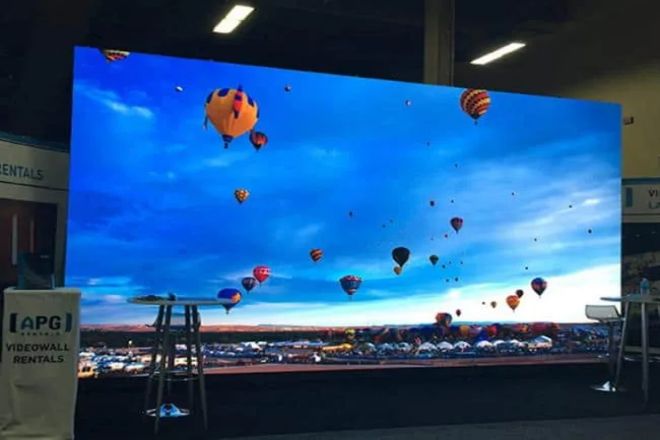Introduction

With the rapid development of science and technology, LED displays have been widely used on various occasions, such as commercial advertising, outdoor media, conferences and exhibitions, etc.
Due to its high brightness, long life, energy saving, and environmental protection, LED display screens are favored by the majority of users. However, as market competition intensifies, some unscrupulous merchants or users have misunderstandings about the detection methods of LED displays, which leads to problems in the actual use of the display, affecting its effectiveness and service life.
1. What will happen if the wrong LED display detection method is used?
Wrong LED display detection methods may lead to a variety of adverse consequences, including but not limited to the following situations:
Misjudgment of faults: If the detection method is incorrect, it may lead to misjudgment of a fault on the display screen. This can result in non-problematic parts being incorrectly replaced or the real problem part being overlooked, increasing repair costs and time.
Safety hazards: Wrong detection methods may not detect potential safety hazards in time, such as power problems, short circuits, etc. If these problems are not dealt with in time, they may cause the display to malfunction during use and may even cause safety accidents such as fires.
Damage to equipment: Some incorrect detection methods may cause damage to the display hardware, such as using inappropriate tools or excessive force for disassembly and testing. This may cause damage to components of the display, affecting its normal use.
Waste of resources: Wrong detection methods may lead to unnecessary waste of resources, such as replacing faulty parts, wasting maintenance time, etc. This not only increases the cost but may also affect the timely repair and use of the display.
Therefore, when conducting LED display testing, correct methods and tools should be used to ensure the accuracy and reliability of testing. At the same time, for unfamiliar parts or problems, you should seek professional help and guidance.
2. Common errors in LED display detection methods

1). Direct visual observation
Reason for the error:
Human vision has limitations and cannot accurately capture all subtle faults, brightness differences, color distortion, and other issues on the display.
Possible consequences:
It is easy to ignore subtle faults on the display. These faults may gradually accumulate over long-term use, ultimately affecting the overall display effect and life of the display.
2). Simple brightness test
Reason for the error:
Only focusing on the brightness of the display screen, while ignoring the testing of other key performance parameters such as contrast, uniformity, viewing angle, etc.
Possible consequences:
Although the brightness of the display may meet the standard, the display effect may not be good in complex environments (such as strong light, dark light, etc.), affecting the user experience. In addition, if the uniformity is not good, it may also cause problems such as a “blurred screen.”
3). Rely on a single test software
Reason for the error:
Over-reliance on a certain test software and the functions of the software may not fully cover various performance parameters and potential problems of the display.
Possible consequences:
It is easy to miss potential problems with the display. These problems may be gradually exposed during subsequent use, affecting the stability and life of the display. Additionally, over-reliance on a single piece of software can limit maintenance personnel’s diagnostic capabilities and solution options.
4). Testing without considering environmental factors
Reason for the error:
During the detection process, the impact of environmental factors such as temperature, humidity, and air pressure on the display performance was ignored.
Possible consequences:
The display may experience abnormal performance or be damaged under certain circumstances. For example, in a high-temperature environment, the brightness, contrast, and other performance of the display may decrease; in a low-temperature environment, the response time of the display may become longer, or even fail to display properly.
In addition, excessive humidity may cause a short circuit in the display’s internal circuit, while changes in air pressure may affect the sealing performance of the display.
3. Correct LED display detection method
1). Comprehensive detection method
- Detailed description:
The comprehensive detection method refers to the combination of multiple detection methods to comprehensively evaluate the performance of the LED display. This includes appearance inspection, power supply inspection, control system inspection, display effect inspection, and other aspects.
During the detection process, more detailed performance indicators such as pixel detection, color detection, gray level detection, and brightness uniformity detection also need to be considered.
- Advantages:
The comprehensive detection method can ensure a comprehensive and detailed evaluation of the LED display and improve the accuracy and comprehensiveness of the detection.
This helps to identify potential faults and problems and repair and handle them in a timely manner, thus improving the reliability and stability of the display.
2). Professional testing software and equipment
- Detailed description:
Using professional testing software and equipment to conduct comprehensive and detailed testing of LED displays is the key to ensuring the quality of the display. These test software and equipment can simulate various actual usage scenarios and conditions, and accurately measure and analyze performance indicators such as brightness, color, contrast, gray level, and response time of the display screen.
- Advantages:
Using professional testing software and equipment can greatly improve the accuracy and reliability of detection. Through precise measurement and analysis, potential problems and failures of the display can be discovered repaired, and processed in a timely manner. This helps improve the reliability and stability of the display and extends its lifespan.
3). Testing that considers environmental factors
- Detailed description:
Testing that considers environmental factors refers to testing LED displays under different environmental conditions to ensure that they can adapt to various environments. This includes testing the display under different conditions of temperature, humidity, air pressure, etc., to evaluate its performance and performance in various environments.
- Advantages:
By considering the detection of environmental factors, it can ensure that the LED display screen can maintain stable performance and performance in various environments. This helps improve the reliability and stability of the display and reduces failures and issues caused by environmental factors. At the same time, it also helps ensure the applicability and compatibility of the display in different application scenarios.
4. How to avoid wrong detection methods

- Improve the professional knowledge and skills of inspection personnel:
Provide regular professional training to inspection personnel to ensure that they master the latest LED display inspection technologies and methods.
Emphasis is placed on the meticulous observation and analytical abilities that inspectors should possess in order to accurately identify potential problems with the display.
Encourage inspection personnel to continuously learn and accumulate experience to improve their problem-solving abilities.
- Use advanced detection equipment and software:
Invest money to purchase advanced LED display testing equipment and software to ensure the accuracy and reliability of testing.
Testing equipment and software are regularly maintained and updated to ensure stable performance and compliance with the latest standards.
Encourage inspection personnel to master and make full use of the functions of inspection equipment and software to improve inspection efficiency.
- Develop complete testing procedures and standards:
Develop detailed testing procedures and standards and clarify testing requirements and steps for each link.
Emphasize the connection and cooperation between various links in the testing process to ensure the coherence and consistency of the testing work.
The testing process and standards are regularly evaluated and optimized to adapt to the continuous development and changes of LED display technology.
- Perform regular maintenance and upkeep on the display:
Develop a maintenance and upkeep plan for the display to ensure it is in good working order.
Clean and dust the display screen regularly to reduce the impact of dust on the display effect.
Regularly check key components such as the display’s power supply and control system to ensure their normal operation.
Regularly conduct performance testing on the display to discover and repair potential problems in a timely manner to ensure the reliability and stability of the display.
Through the implementation of the above measures, wrong LED display detection methods can be effectively avoided, the accuracy and reliability of detection can be improved, and the quality and performance of the display can be ensured.
Conclusion
As an important carrier of modern information dissemination, LED display screen quality and stability are crucial. Wrong detection methods will not only affect the performance and service life of the display but may also cause safety hazards.
Therefore, we must attach great importance to the testing of LED displays and adopt correct testing methods to ensure the quality and stability of the display.
Finally, if you want to know more about LED displays, please get in touch with us.
